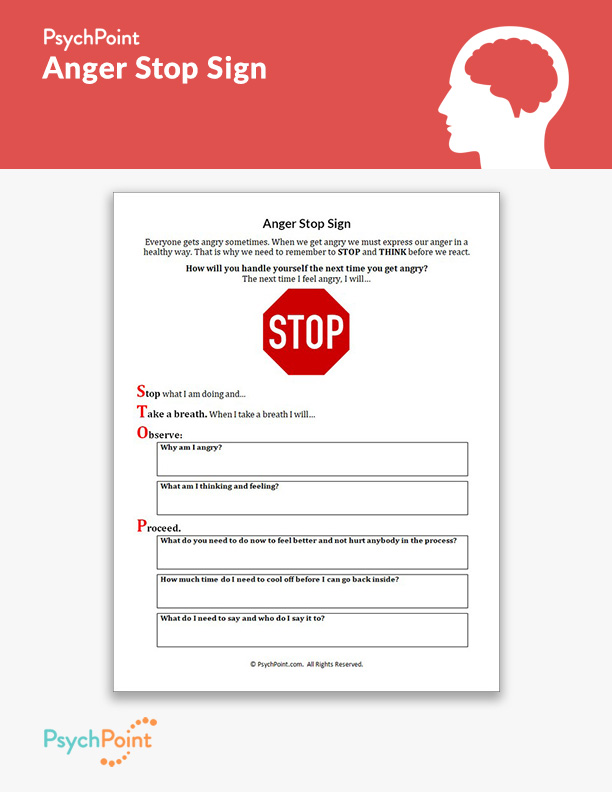Anger Stop Sign Worksheet
Worksheet updated on November 13th, 2024

Anger is an emotion that can overwhelm anyone, especially when proper coping skills are not being used. Clients in therapy benefit from learning healthy and effective coping skills for anger. Coping skills help with regulating emotions and reducing reactivity and destructive behaviors.
Teaching proper anger management skills helps a client in therapy learn how to manage their anger and other emotions that trigger them. It also teaches healthy ways to express feelings, rather than reacting to things in a way that provokes conflict. Learning how to cope with anger helps the client build perspective and understand their needs for healthy emotional regulation.
About This Worksheet
Healthy coping skills for anger make a difference in a client’s quality of life. Having a step-by-step process for handling moments of anger can help with improving communication skills, reducing reactivity that incites conflict, and preventing consequences that come from anger outbursts.
The Anger Stop Sign worksheet provides a 4-step process for healthily addressing anger. It utilizes the STOP acronym, which stands for:
- Stop what I am doing
- Take a breath
- Observe
- Proceed
With this acronym, the client learns how to use the steps for healthily handling anger. It also boosts accountability, as the process slows down reactivity and gives the client authority over how they respond to triggers. This worksheet is great for group and individual therapy and can be used with older children, adolescents, and adults.
Instructions
Begin by reading the worksheet introduction explaining the process of the STOP sign exercise. Have the client recall a recent incident of anger to use as an example for completing the worksheet. Complete the steps with the client, allowing them time to complete the reflection questions.
Review the responses to the reflection questions with the client. Reflect on how the Anger Stop Sign worksheet can be used in triggering situations. You may ask reflection questions, like “How do you think these steps can help you manage your anger?” and “What is your main motivator to control your anger outbursts?” Provide the client with a copy of the worksheet for reference and encourage them to practice the exercise daily and when feeling triggered.







